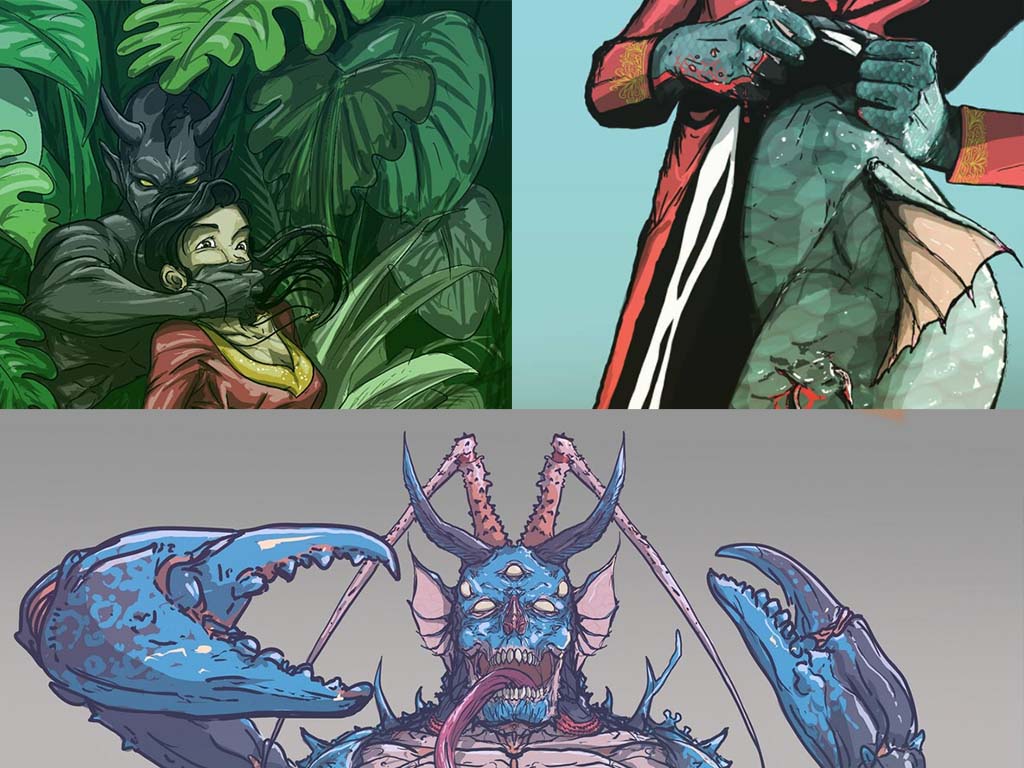
The telling of folklore stories used to be a staple act of Maldivian culture. Folktales were passed down through generations by word of mouth and were fundamental to building core values and beliefs that exist within the Maldivian society. However, this monumental tradition is slowly but surely becoming a thing of the past due to globalization and the dominance of westernized media. In a time where the youth are progressively losing touch with their traditional narratives, the need for appealing Maldivian content has never been so urgent. Not only that, but the Maldives is globally recognized mainly for its tourism, and not culture. This limited perception begs to raise awareness that the Maldives is so much more than just a “land of paradise”.
Now that the problems have been identified, the question remained, “How can I kill two birds with one stone?”
What better way to bring these traditional stories back to life than through the medium of animation. After all, animation has been known to preserve and educate viewers on cultural diversity worldwide. These folktales can be reworked in a way that will help reconnect locals to their roots and also appeal to the global population, raising cultural awareness in the process. The success of any animation is heavily dependent on the characters that reside within the story. Without compelling characters, viewers will not be captivated nor intrigued by the animation and the viewers will be completely detached from the story. Therefore, I researched the Maldivian folklore character design and the elements needed to ensure an authentic and believable Maldivian character.
I use the word “ believable” as the core purpose of character design is to translate a message to the audience. My reasoning is that if the message embedded within the design of the character doesn’t get through to the viewer, they will not be able to resonate with the character, and they will disengage from the whole experience of viewing the animation in the first place. To avoid this from happening, it is crucial to understand how to properly use, & manipulate the basic elements of character design (color, shape, silhouette, and psychology) to communicate the intended message successfully. It is also equally important to understand the Maldivian public’s wants and needs, in relation to the visualization of an authentic character.
The challenge in visualizing a Maldivian folklore character/ characters, however, is to create one that is close to the common perceptions of the general public. I say this because there are already established physical traits that the Maldivian public associate a number of folklore characters with, which are primarily influenced by the traditional narratives. When the public is already dissatisfied with how the country is being represented (or lack thereof), local satisfaction and support are a priority, so I had some questions to ask in terms of what the Maldivian public expects.
The findings suggest that the locals are looking for characters that embody strong personalities and preferably have a blend of aesthetic and monstrous features that bring out the essence of Maldivian folklore. Their main proposition, however, is that the character must be true to how it is described, in the sense that it is an honest depiction of the chosen character. By asking the Maldivian public which folklore character they remembered the most, I was able to narrow down to the most popular three folklore characters that I could potentially design for the use of a future animated folktale. These were Santhi Mariyanbu (evil female supernatural being), Rannamaari (notorious sea demon), and Foolhudhigu Handi (long navel ghost).
I also reached out to three Maldivian experts in the field of character design and animation, so that I could get some advice on how to go about the whole conceptualization process. After talking with them, one thing soon became clear. It was that I had completely underestimated the power of the narrative. A character cannot just appear out of thin air. The audience must believe that the character is and has been existing in the narrative so that they can be interpreted as believable characters, filled with believable emotions which are all influenced by a believable backstory.
So, how exactly can I initiate a folklore character from traditional narratives?
First things first, I need to do extensive research on the chosen folklore itself and familiarize myself with the character’s backstory to make it easier for me to identify the design aspects that will influence the internal and external features of that character. The backstory helps to reveal the character’s personality, which can be portrayed through the use of shape. The combination of these shapes then forms the character’s silhouette, which must be able to capture the attention of the viewer. The folklore narrative not only reveals the character’s backstory but also gives indications of the time period, environment, surroundings, climate, etc. All these details need to be considered and implemented in the design of the character. To put things into perspective, I also have to consider, the practicality of their costume and props, for the character to be believable and culturally accurate. For instance, since the Maldives is in a hot climate, it wouldn’t make sense for the character to wear multiple layers of clothes.
Using the knowledge gathered, I am looking forward to envisioning a Maldivian folklore character that can then be utilized for future animated folktales.